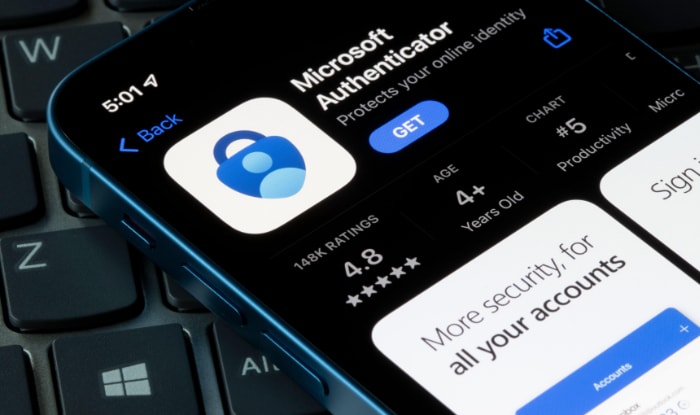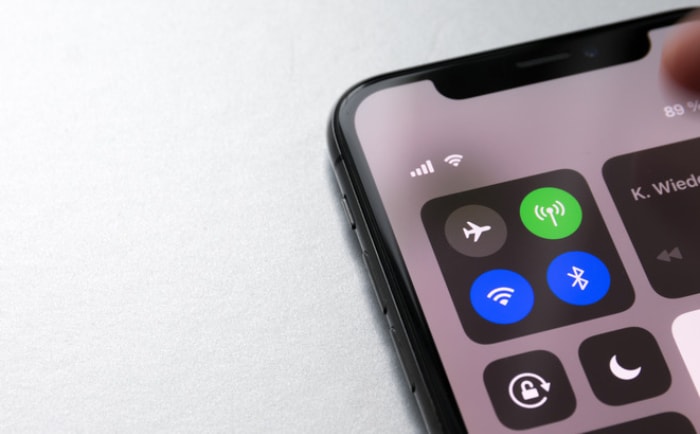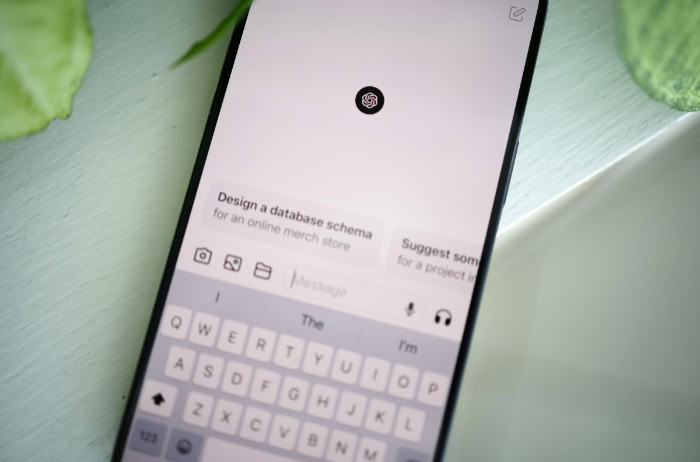What Is a One-Time Password (OTP)? And How It Works

Most of us know the drill. You enter your username and standard credentials, but before you gain access, your phone buzzes with a notification containing a short code.
This fleeting string of numbers is a One-Time Password (OTP). Defined as a unique and automatically generated sequence of characters, an OTP authenticates a user for exactly one login session or transaction.
Once used, the code becomes instantly worthless.
This mechanism exists to solve a massive security flaw found in traditional static passwords. While a standard password might remain the same for years, an OTP changes every time you need it.
This dynamic approach ensures that even if a hacker intercepts your credentials, they cannot use them again. It adds a necessary layer of defense that verifies you are who you say you are before granting entry to your sensitive accounts.
The Core Mechanics of an OTP
An OTP might appear to be a random string of numbers, but the technology relies on precise algorithms and strict rules to function. The system works because both the server and the user's device agree on specific parameters that govern how and when a code is valid.
These mechanics ensure that the password is secure, temporary, and synchronized without requiring constant communication between the device and the bank or service provider.
The Single-Use Rule
The most defining characteristic of these passwords is strictly defined by their name: they function for one use only. As soon as a user enters the code and logs in, the system marks that specific string of characters as expired.
If a hacker manages to intercept the code during the transmission, the stolen data does them no good because they cannot use it again. Immediate invalidation serves as the primary defense against replay attacks.
In a replay attack, a bad actor tries to reuse credentials they stole earlier to gain unauthorized access. With an OTP, those stolen credentials are essentially dead on arrival, rendering the intercepted data useless.
Strict Time Sensitivity
Speed is not just a convenience here; it is a necessary security requirement. Most OTPs come with a very short lifespan, typically ranging from 30 to 60 seconds.
If the user does not enter the code within this brief window, the string becomes invalid, and the system must generate a new one. A tight timeframe minimizes the opportunity for an attacker to intercept and use the code.
Even if someone sees the code over your shoulder, they likely will not have enough time to memorize it and type it into their own device before the clock runs out.
The Shared Secret Concept
Users often wonder how their offline authenticator app knows exactly what code the online server expects without an internet connection. The answer lies in a “shared secret” or a cryptographic seed.
When a user first sets up two-factor authentication, the server and the device exchange a unique secret value. The system stores this seed securely on both ends, and it is never shared again.
Both the server and the device use this same seed, combined with the current time or a counter, to run a mathematical algorithm. Because they start with the same inputs, they independently calculate the exact same result at the exact same moment.
Types of One-Time Passwords

While the end result is always a temporary code, the method used to generate that code varies significantly between systems. Different situations call for different underlying mechanics, which dictate how the server and the user verify identity.
The primary distinction lies in the variable used to create the password, such as the current time, a sequential counter, or a specific prompt from the server.
Time-Based OTP (TOTP)
The most prevalent form of OTP used in modern authenticator apps is the Time-Based One-Time Password, or TOTP. In this system, the moving factor that drives the code generation is the current time of day.
The algorithm takes the shared secret key and combines it with the current timestamp to produce a unique string of digits. Because time moves forward constantly, the code changes automatically at fixed intervals, which usually coincide with the 30 or 60-second expiration window.
Synchronization acts as the fundamental requirement for TOTP to function correctly. The clock on the user’s smartphone must match the clock on the authentication server almost perfectly.
If a device drifts even a minute or two ahead or behind the actual time, the code generated on the screen will not match what the server expects, resulting in a failed login attempt. Popular applications like Google Authenticator and Microsoft Authenticator rely on this time-synchronized approach to secure millions of accounts.
HMAC-Based OTP (HOTP)
Before smartphones made time-based codes the standard, many systems relied on HMAC-Based One-Time Passwords, or HOTP. Instead of using the time of day, this method uses a sequential counter to generate the password.
Every time a user requests a new code, usually by pressing a button on a hardware token or refreshing an app, the counter increments by one. The algorithm combines the shared secret with this new counter number to calculate the next valid password in the sequence.
Event-based codes offer distinct advantages in environments where device clocks might be unreliable or synchronization is difficult. A hardware token stored in a drawer for a year will still work perfectly when retrieved because it does not care what time it is; it only cares that it is generating the “next” code in the line.
The server tracks the counter state for each user, ensuring that it accepts the next logical code in the sequence while rejecting any codes that have already been used.
Challenge-Response OTP
Some security protocols require a more interactive verification process known as Challenge-Response. In this scenario, the authentication does not start with the user simply generating a code.
Instead, the server initiates the process by sending a specific piece of data, called the “challenge,” to the user. This challenge often appears as a random string of numbers or a unique prompt displayed on the login screen.
The user must then enter this challenge into their token or app. The device uses the shared secret to perform a calculation on the challenge data and produces a specific “response” code.
The user enters this response back into the website or system to prove their identity. This method verifies that the user holds the correct device and secret key without ever transmitting the key itself.
It effectively proves that the user is present and actively participating in the authentication exchange.
Common Delivery Methods
Users encounter OTPs through various channels depending on the service provider and the required security level. While the underlying code serves the same purpose, the vehicle used to deliver it impacts both user experience and safety.
The choice of delivery method often involves a trade-off between ease of access and vulnerability to interception, with some options prioritizing convenience while others prioritize strict isolation from potential threats.
SMS and Email Delivery
Text messages and emails represent the most widely recognized way to receive verification codes. Banks and social media platforms frequently default to this method because it requires zero technical setup from the user.
You simply wait for the notification, read the number, and type it in. Despite this convenience, security experts view SMS as the weakest link in the authentication chain.
Mobile networks were not originally designed with high-grade encryption in mind, leaving messages vulnerable to interception. A specific threat called SIM swapping allows attackers to trick a mobile carrier into transferring a victim's phone number to a new SIM card.
Once the number is transferred, the attacker receives all the victim's incoming texts, including the critical login codes, effectively bypassing the security check.
Authenticator Applications
Dedicated applications like Google Authenticator or Microsoft Authenticator offer a significant upgrade in security and reliability. Unlike SMS, which relies on a mobile network to deliver a message, these apps generate the code directly on the device's hardware.
The app calculates the code locally using the stored secret and the current time. Independence from the cellular network means a user can generate a valid login code even while in “airplane mode” or in a location with absolutely no reception.
Since the code never travels across a network, it eliminates the risk of remote interception during transmission. The barrier to entry is slightly higher, as it requires the user to install software and scan a QR code to link their account, but the payoff is a much more robust defense.
Hardware Tokens
High-security environments often forego phones entirely in favor of dedicated hardware tokens. These small physical devices, often shaped like key fobs or credit cards, feature a tiny LCD screen that displays the current passkey.
Hardware tokens are completely air-gapped, meaning they have no connection to the internet or any external network. This isolation makes them virtually impossible to hack remotely.
A user must physically possess the device to see the code, which aligns perfectly with the security principle of “something you have.” Corporations and government agencies frequently issue these to employees to ensure that even if a computer is compromised, the intruder cannot access sensitive systems without also stealing the physical token from the employee's pocket.
Why OTPs Are Superior to Static Passwords

Static passwords served as the standard for digital security for decades, but their permanence creates a significant vulnerability. Once a user creates a password, that string of characters remains valid indefinitely until someone manually changes it.
This lack of change gives attackers ample time to guess, steal, or crack the credential. One-time passwords address this fundamental weakness by introducing dynamic data into the login process.
Immunity to Replay Attacks
The most immediate advantage of an OTP lies in its disposable nature. Standard passwords function like a physical house key; if a thief makes a copy, they can enter the house repeatedly until the lock is changed.
An OTP functions more like a ticket to a specific event. Once the ticket is scanned at the door, it cannot be used again.
If a cybercriminal manages to spy on a network and record the OTP as it is being sent, that information becomes worthless almost instantly. The system marks the code as “used” the moment the legitimate user logs in, or it expires naturally within seconds.
Consequently, a hacker who attempts to replay that same code later will find themselves locked out.
Defense Against Data Breaches
Large-scale data breaches occur frequently, resulting in millions of usernames and passwords ending up for sale on the dark web. When a service provider suffers a breach, attackers gain access to the static passwords stored in the company's database.
For users relying solely on those passwords, their accounts are immediately compromised. An OTP system effectively neutralizes this threat.
Even if an attacker possesses the correct username and static password from a leaked database, they still cannot complete the login process. They lack the real-time generator, such as a smartphone or hardware token, required to create the second part of the credentials.
The stolen static password becomes a useless fragment of information without the corresponding dynamic code.
Enabling Two-Factor Authentication
Security experts categorize authentication methods into three main buckets: something you know, something you have, and something you are. Static passwords represent “something you know.”
OTPs serve as the most practical implementation of “something you have.” By requiring an OTP, a system enforces Two-Factor Authentication (2FA), which demands proof of both knowledge and possession.
The user must know the password and physically possess the device that receives or generates the code. This combination creates a much stronger barrier than relying on memory alone.
An attacker might be able to trick a user into revealing a password through phishing, but stealing the physical device needed to generate the OTP requires a completely different, and much more difficult, set of criminal actions.
Challenges and Limitations
Implementing one-time passwords significantly elevates security standards, yet the technology is not without its practical drawbacks. The very mechanisms that protect accounts, including time constraints and device reliance, can occasionally work against the legitimate user.
While the added layer of defense effectively blocks unauthorized access, it also introduces potential points of failure that can lead to frustration or account lockouts.
Dependency on Physical Devices
The entire system hinges on the availability of a specific piece of hardware. If a user loses their smartphone or misplaces a hardware token, they lose the ability to generate the required codes.
This creates a single point of failure where a broken screen or a dead battery can prevent access to essential services like banking or email. Recovering from a lost device is often a complex administrative ordeal, requiring proof of identity that goes far beyond a simple password reset link.
Without printed backup codes, a user might remain locked out for days while verifying their identity with customer support.
Delivery Issues and Delays
Reliance on external networks for code delivery frequently causes friction during the login process. SMS messages must travel through carrier networks that are susceptible to congestion, outages, or simple latency.
A code that arrives five minutes late is useless if the login window expires in sixty seconds. Users in basements, rural areas, or concrete buildings often struggle to get the signal required to receive a text.
International travel complicates matters further, as users may swap SIM cards or disable roaming, severing the connection to their phone number and cutting off their access to verification codes.
Susceptibility to Phishing
Sophisticated attackers have developed methods to circumvent OTP protections through real-time social engineering. In a modern phishing attack, a hacker sends a link to a fraudulent website that mimics a legitimate service perfectly.
When the unsuspecting user enters their username and password, the fake site prompts them for the OTP. As the user types the code, the attacker's software instantly relays it to the real website.
If the transfer happens within the valid time window, the attacker successfully logs in using the victim's own code, bypassing the security check entirely.
Conclusion
One-time passwords represent a necessary evolution in personal security. By shifting from static credentials to dynamic, temporary codes, this technology addresses the fundamental flaws found in traditional login methods.
It effectively transforms a user's defense into a moving target. Even if a password is compromised, the requirement for a secondary, time-sensitive code ensures that a stolen credential is no longer a master key to sensitive accounts.
No security system is completely impenetrable, and the extra step of typing in six digits can sometimes feel like a burden. Yet, this minor inconvenience offers a massive return on investment regarding safety.
Taking a few seconds to verify identity drastically lowers the probability of identity theft. In an era where data breaches are common, that brief pause acts as a powerful barrier against unauthorized access.


